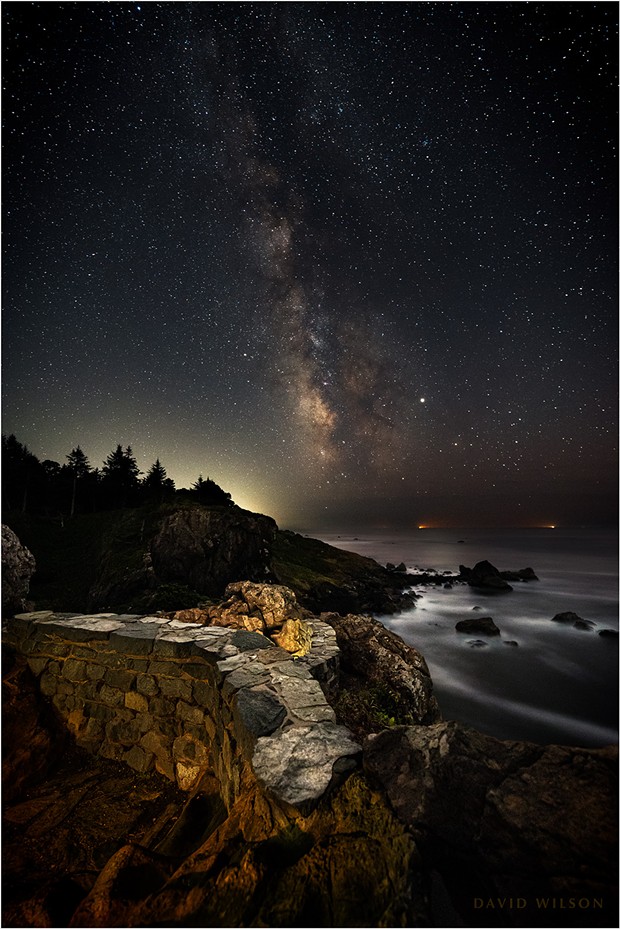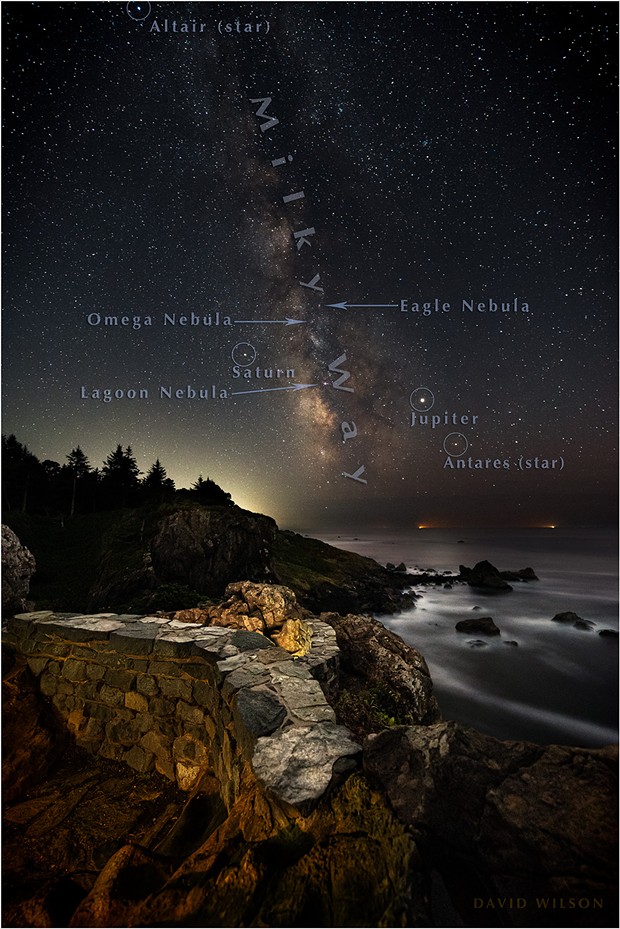News Blog

- David Wilson
A photograph can be worth many more than a thousand words. It’s an old expression, though, and maybe the number “one thousand” just isn’t what it used to be. But you’ll be happy to know that I’ll spare you the full count today and just touch on a couple thoughts about locations, both in the sky and here on Earth.
Do you expect to find the Milky Way in the sky when you go out to a dark place to star gaze? You’d find it stretching across the sky all summer, but in winter when Earth’s night side faces the opposite direction we can lose sight of its magnificence — the star field we see at night changes throughout the year. The stars all maintain their positions relative to each other, but our viewing angle of the cosmos changes a little each day as we orbit the sun; in half a year Earth’s night side will be facing the opposite direction from now, and in a full year we will again have the same view as tonight.

- David Wilson
- Ramparts stand watch over the great Pacific Ocean at the edge of the continent. The lights of a pair of fishing boats glow in the marine layer’s gloom on the horizon. Patrick’s Point State Park, Humboldt County, California. September 2019.
During the 2019 Milky Way season, the Milky Way has been straddled by Jupiter and Saturn. I am writing this in late September, and since March the two planets have slid a bit to the right relative to the Milky Way; earlier in the year Jupiter was just inside of it and Saturn was a little farther from it. In 2018, Mars was near the Milky Way all summer and Saturn was deep inside it.
Photographing at night has made me more aware of the motion of objects in the night sky. The sky changes almost imperceptibly each night, and different parts change at different rates: The stars all move together, but the planets change their place against the stars gradually as they move in their own orbits around the sun. The speedy moon appears each night with a different shape and in a different position. All of this helps make the night interesting to photograph.

- David Wilson
- Too numerous to label, stars, nebulae and planets abound in this image with some of the notable objects annotated. Not labeled is the Dark Horse Nebula; its foot is standing on Jupiter, can you spot it? Pacific Ocean, Humboldt County, California. September, 2019.
But there’s a larger issue about sharing locations too precisely, called geotagging: If your image is compelling, through the power of social media you can inadvertently send large numbers of people to the same location by geotagging it in your post. People see the pin on the map and can go directly to the spot. The problem isn’t that it leads to thousands of similar images, but that it can have a terrible physical impact on the location itself. Places have been ruined by crowds wanting their own similar pictures of sites they’ve been seeing online.
An alternative to tagging a specific location is to tag an area, region, or park in general. A lot of areas, ours included, rely to some extent on tourism income. Parks are made for visitors. I do not know the perfect solution, but my thinking at the moment is that it is preferable to tag the park or region generally rather than tagging a specific spot in that area. Sharing beautiful photos tagged with the general area will still help bring tourism dollars into the parks and communities around them. It brings tourists to the area, and from there they can find their own special places.
I encourage all of us photographers to consider the impacts of our geotagging, and instead to tag more general areas, regions or parks when we post our special images. It can still bring tourist dollars into the area, while not focusing the crowds’ impact on specific spots.
To keep abreast of David Wilson’s most current photography or peer into its past, visit or contact him at his website mindscapefx.com or follow him on Instagram at @david_wilson_mfx .
Comments